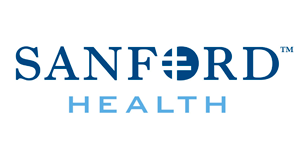Health systems: Omicron surge forcing ‘harder and harder choices’
Both Sioux Falls health systems reported they are having to make increasingly hard decisions about who is admitted to the hospital because of an all-time surge in COVID-19 patients.
The COVID-19 variant is spreading faster and causing a greater percentage of positive tests than at any time during the pandemic.
For instance, positive tests at Avera Health peaked in the high 20 percents during the fall surge of 2020. Currently, they are trending in the upper 30s.
“Omicron has just taken off incredibly fast,” said Dr. David Basel, vice president of clinical quality for Avera Medical Group. “It shoved delta to the side.”

While patients who have received two or three doses of vaccine are not reporting as severe symptoms, the sheer number of cases in combination with people who continue to be unvaccinated are producing a number of seriously ill people.
“We see a lot of patients now that are being admitted in their 20s and 30s that are very sick,” Basel said, adding that Avera went from about 100 COVID-19 patients systemwide in December to 200 now.
When combined with demand from influenza patients and others who need more traditional hospital care, for every bed that opens “we are having to choose between multiple patients on who is the sickest and prioritize who can be put in that bed,” Basel said. “We are making harder and harder choices every day, and those choices get harder every day as those numbers go up.”
There are more than 800 patients being cared for at home with a combination of video visits, nursing visits, phone calls and remote monitoring, including more than 130 patients on oxygen.
“Frankly, I don’t know where we would have put them, so we are very thankful for the advancement of science that’s allowed us to do that safely and effectively,” Basel said.
At Sanford Health, similarly difficult decisions are being made, said Dr. Michael Wilde, the health system’s vice president medical officer in Sioux Falls.

“We have to prioritize those with the greatest needs,” he said. “Once again, we’re seeing our hospitals reach a very high census that includes both COVID and non-COVID patients. This is very challenging for all of us working in health care.”
While a minority of patients have been vaccinated and boosted, they typically are older patients and those with underlying health conditions. Neither hospital is reporting anyone with three doses being on a ventilator.
Both systems also are reporting hundreds of workers out sick or having to call off work because of illness within their homes or closed child care centers.
“This is an urgent situation,” Wilde said. “We’re doing everything we can to prevent a workforce shortage to make sure we can be there for our communities who rely on us in their greatest time of need.”
Sanford also reported today it is temporarily pausing tests for people who are not symptomatic. And if you aren’t high risk and experiencing mild symptoms, you’re encouraged to take an at-home test. Avera is still testing both symptomatic and asymptomatic people but encourages those without symptoms to do a home test when possible.
Asking for help
The health system leaders called on the public to support them in multiple ways:
- Become vaccinated. That includes receiving a booster. Without a booster, your vaccine is estimated to be 30 percent to 40 percent effective. With it, it will “bump you up to 70 to 80 percent effectiveness,” Basel said. “We have plenty of vaccine supply. If you want a booster, we will figure out a way to get it to you.”
- Even if you think you have a cold or other illness, stay home. Symptoms associated with the omicron variant include a runny nose, sore throat, nausea and diarrhea. Half presenting with those symptoms are testing positive for COVID-19, Basel said. “Even though you may feel well enough to go to work or go to school, stay home and get yourself tested.”
- If you take an at-home COVID-19 test that comes back positive, assume it is positive. Don’t schedule an outside test to confirm you’re positive, Wilde said. In addition, do not go to the emergency room looking for a COVID-19 test. “Those are places for people with life-threatening conditions.”
- Wear the highest quality mask available, which is now the recommendation of the CDC, to prevent spreading the virus.
- Show patience and kindness to health care workers. Both leaders report staff feeling significant stress and burnout.
More information is available from Avera here and from Sanford here.
Share This Story
Most Recent
Videos
Want to stay connected to where you live with more stories like this?
Adopt a free virtual “pigeon” to deliver news that will matter to you.





























